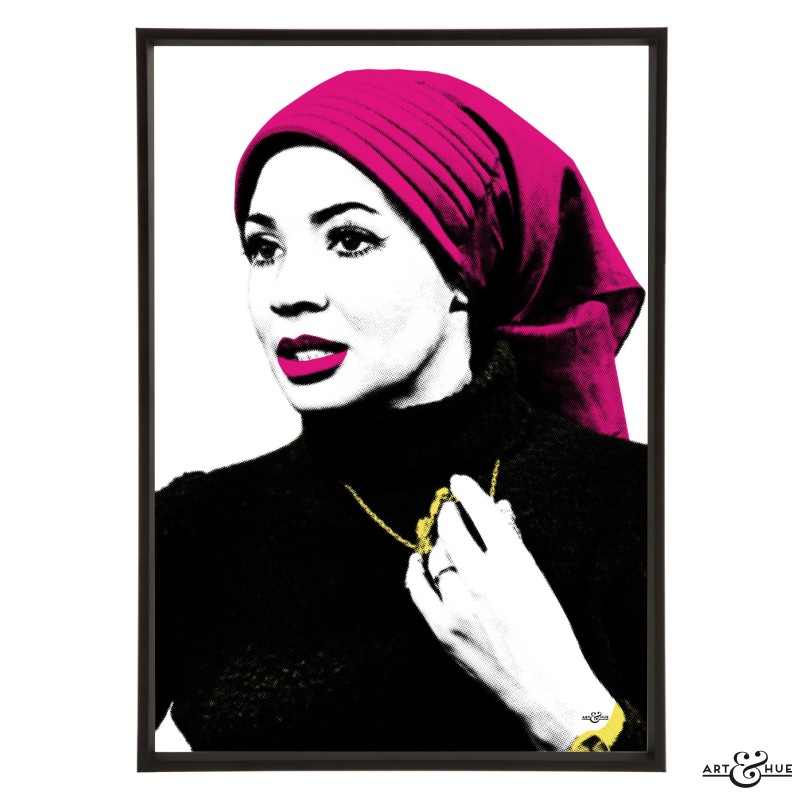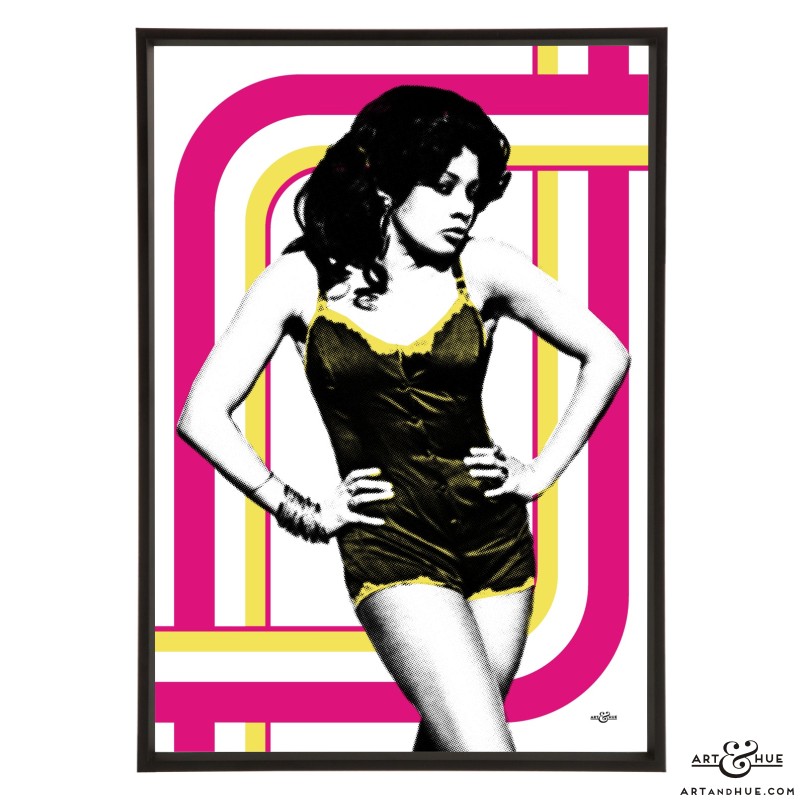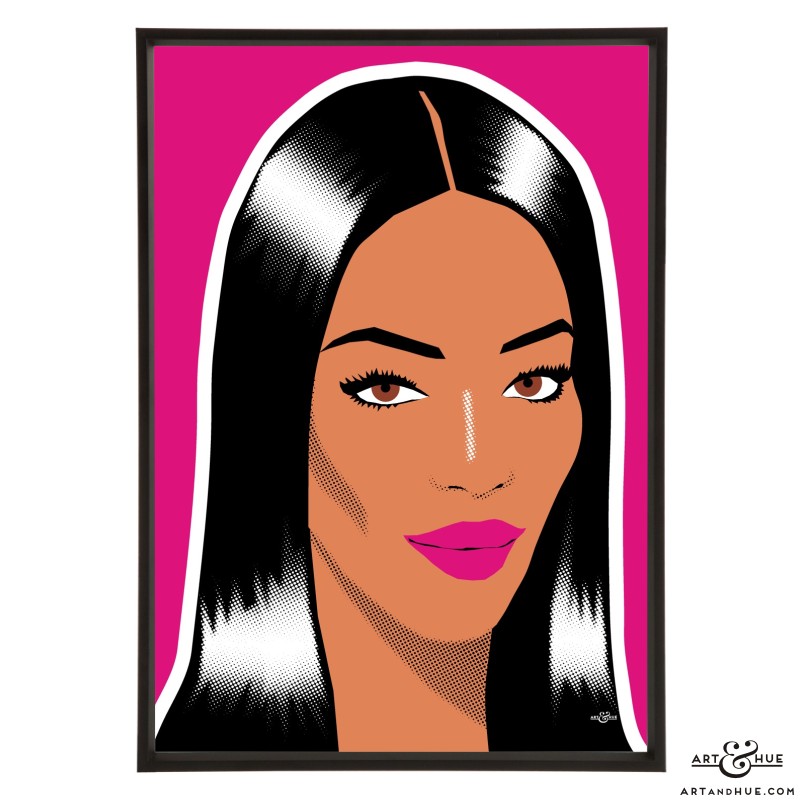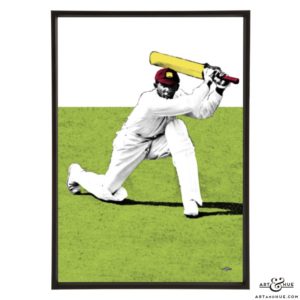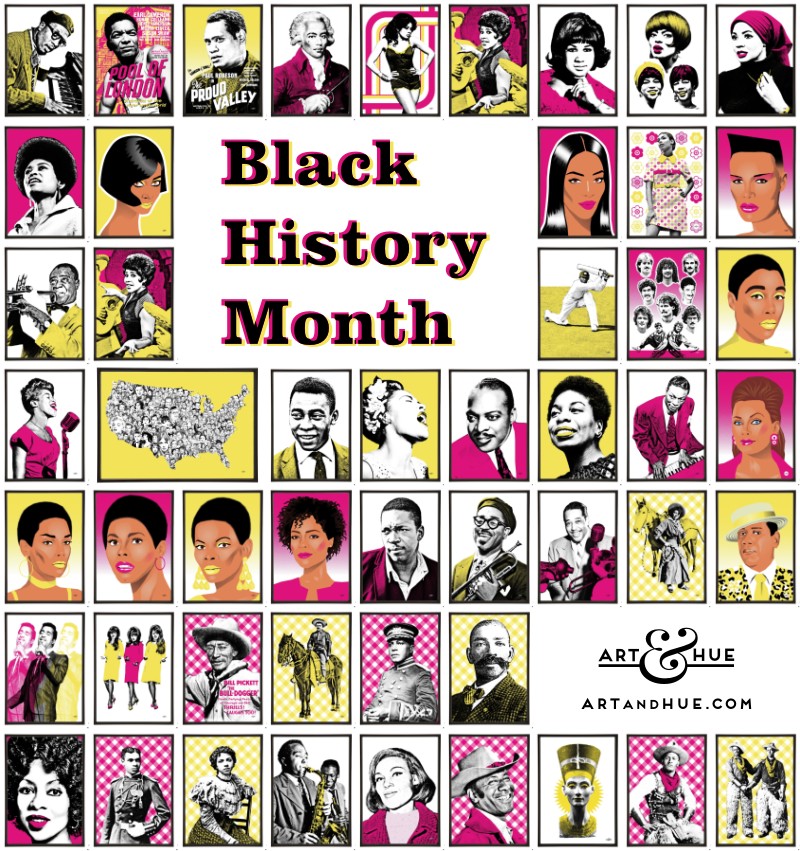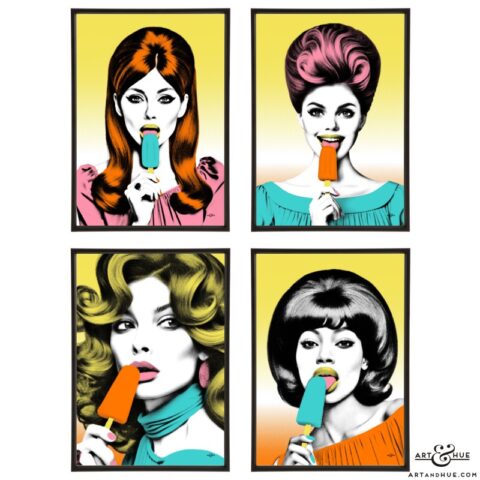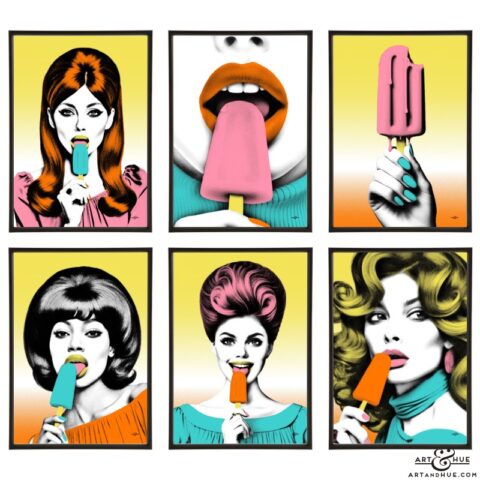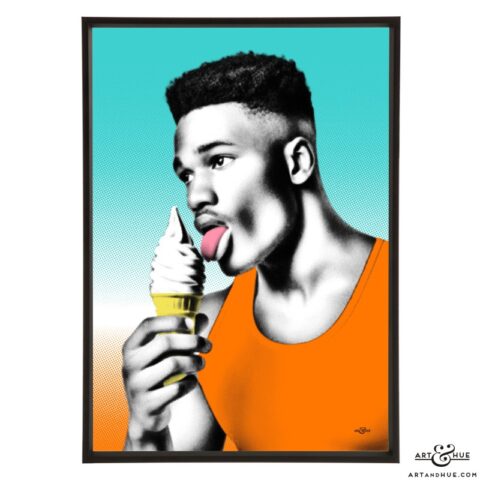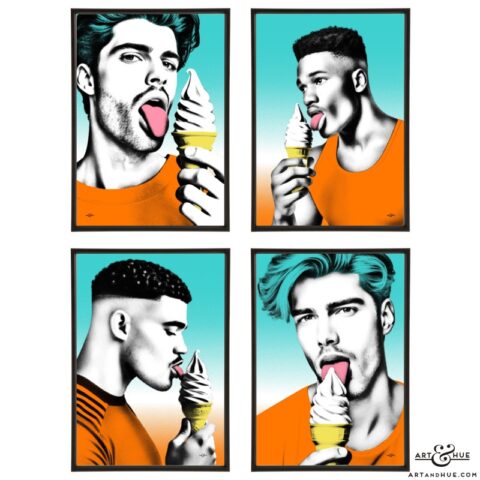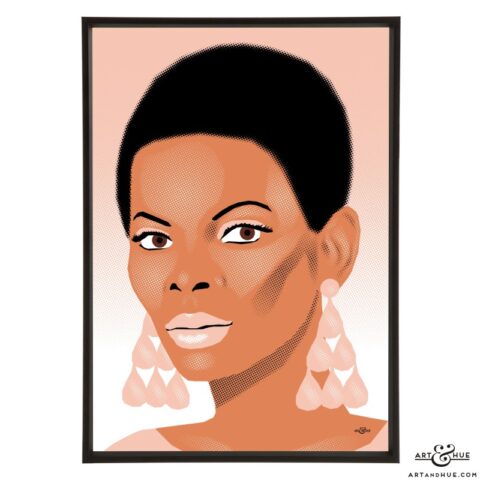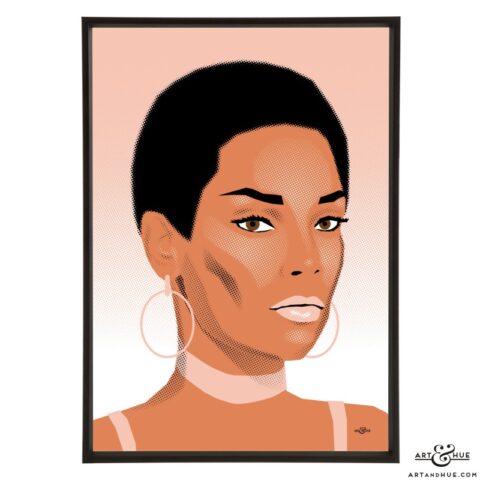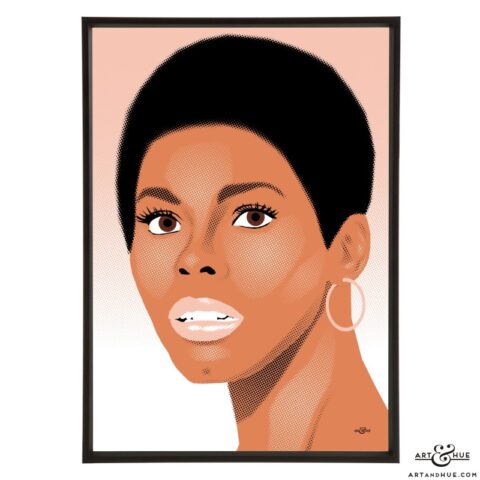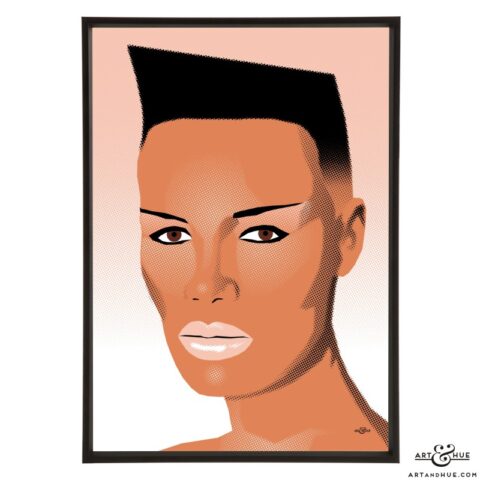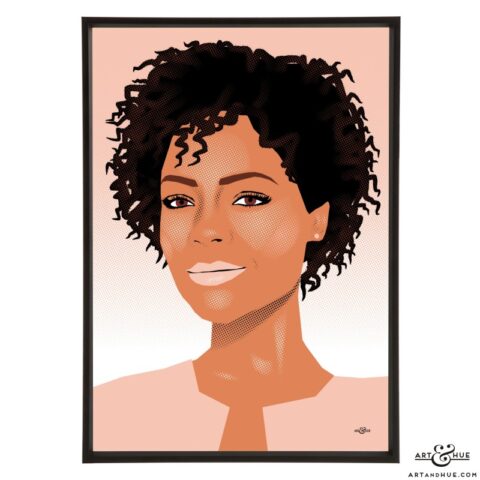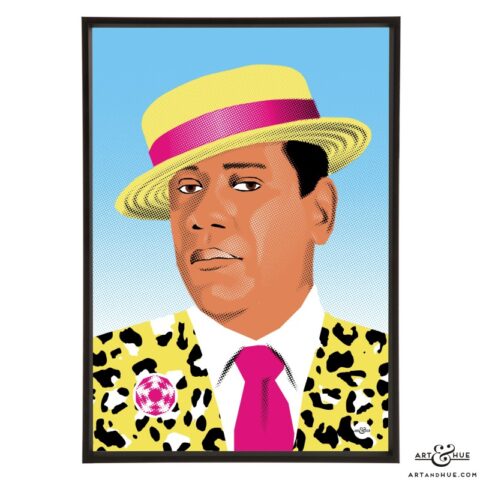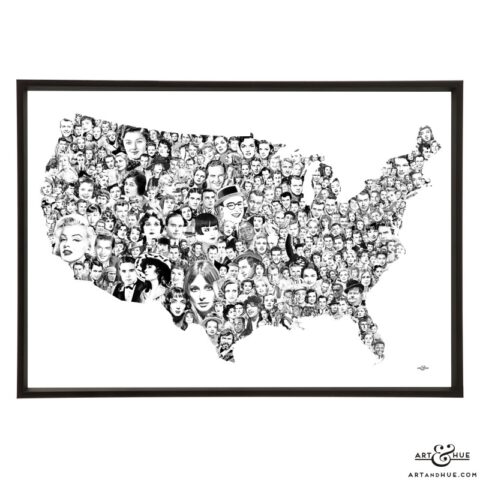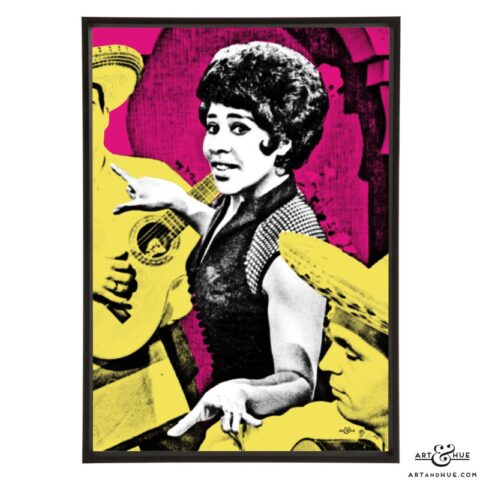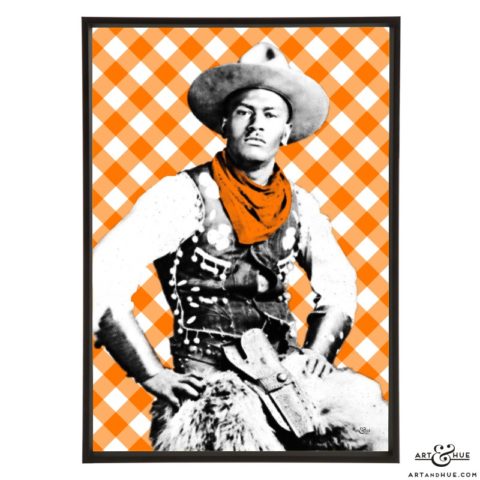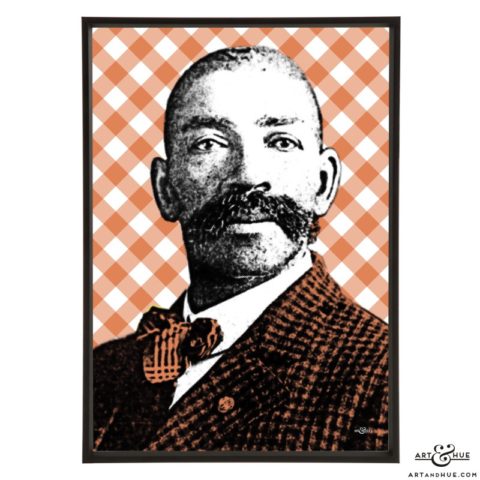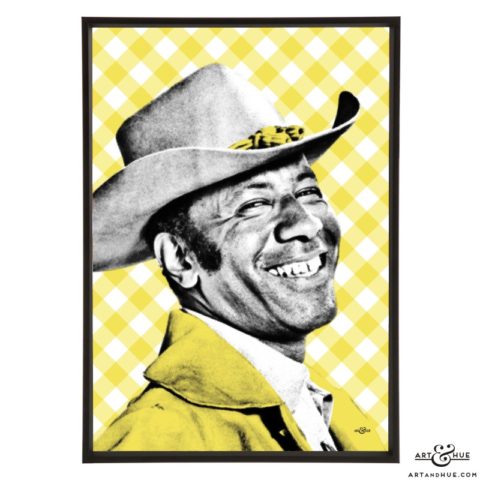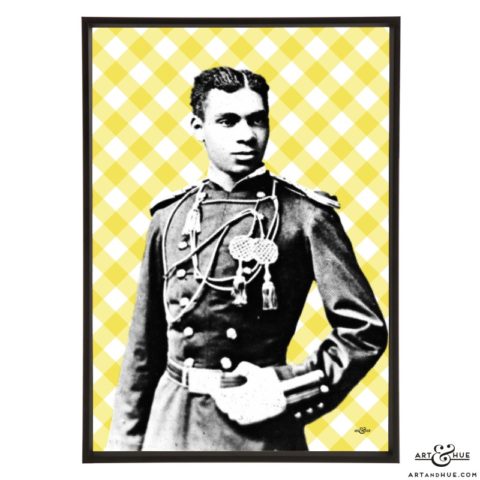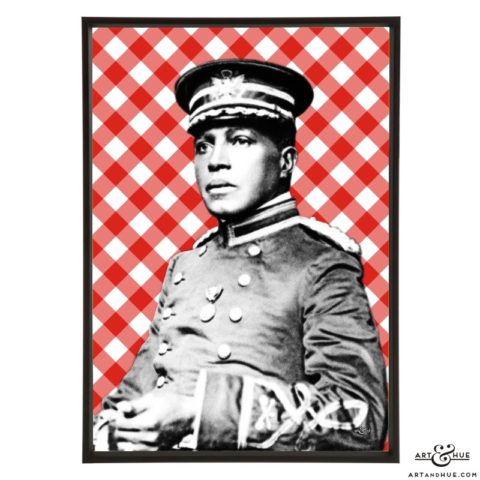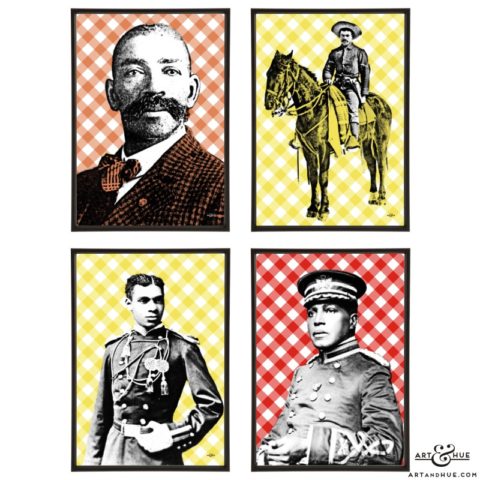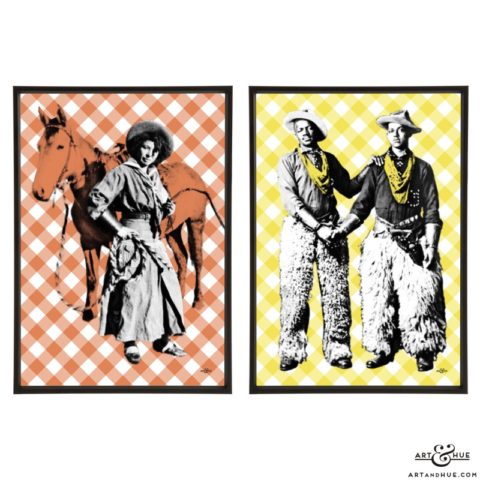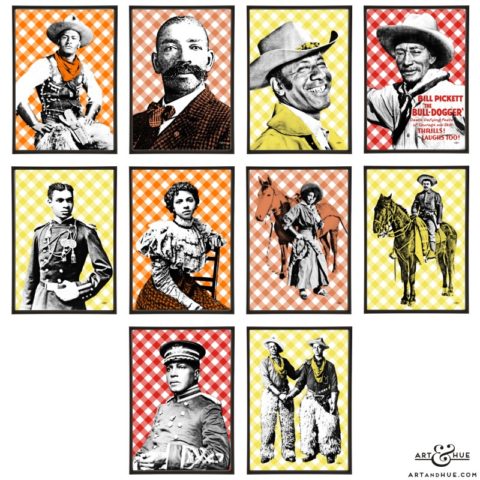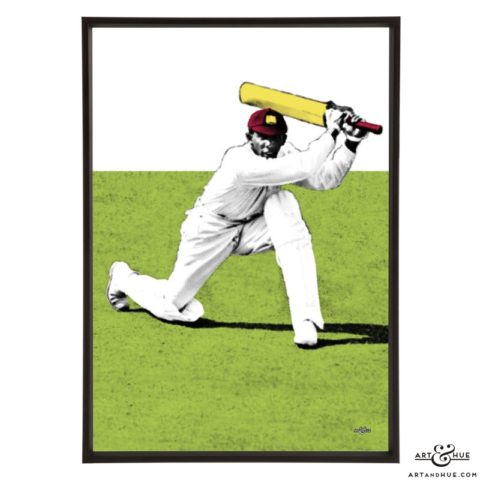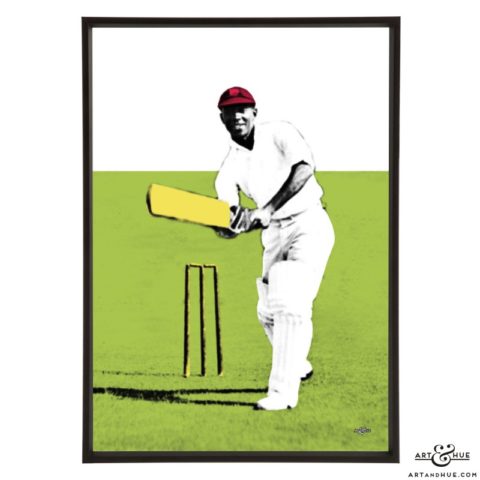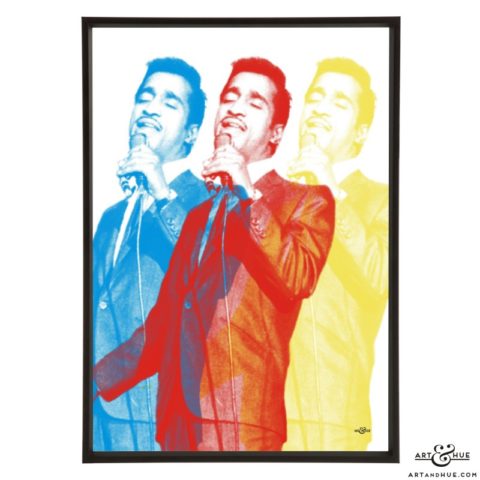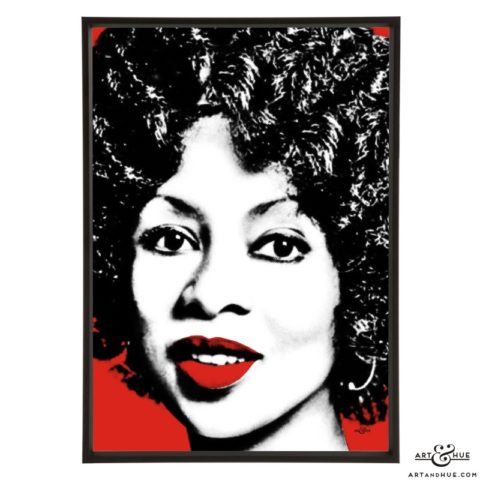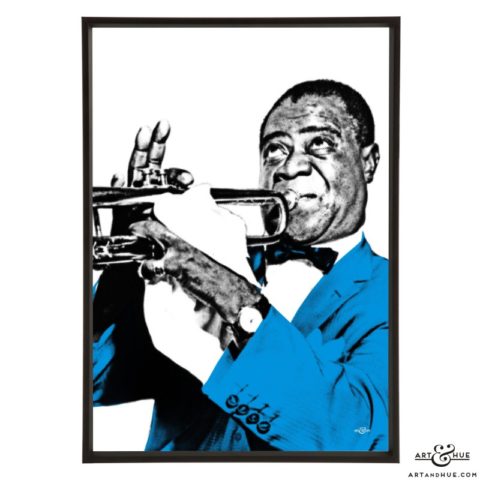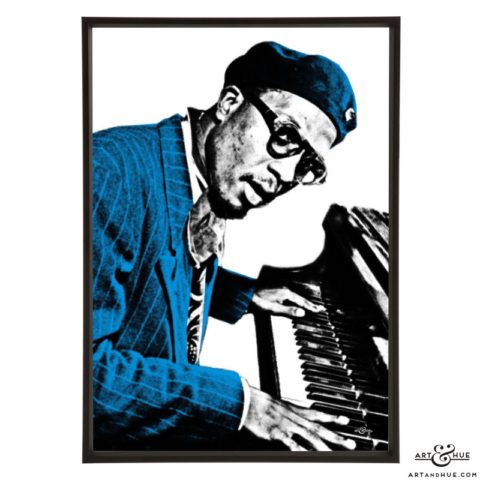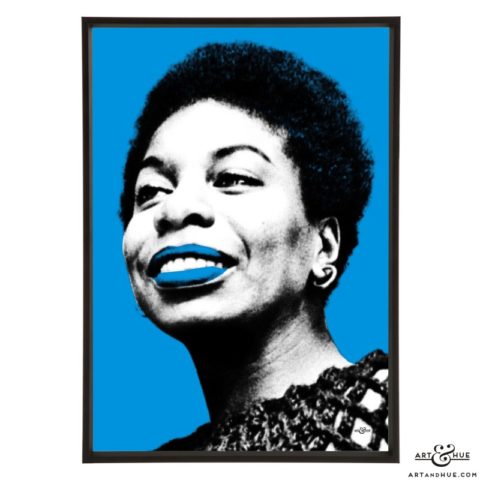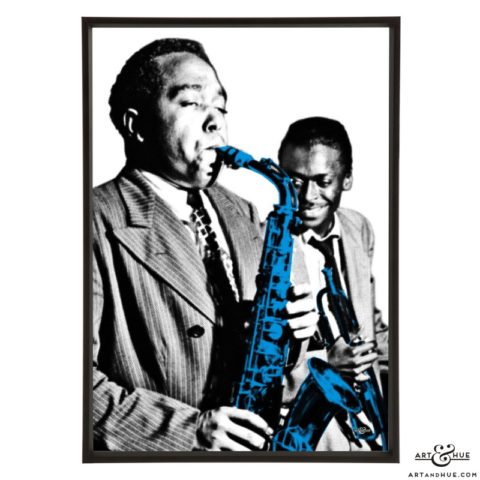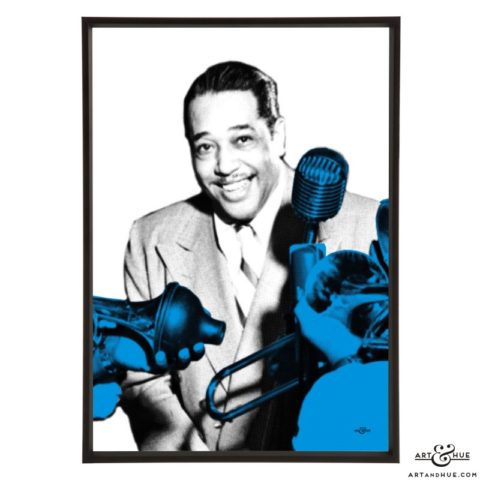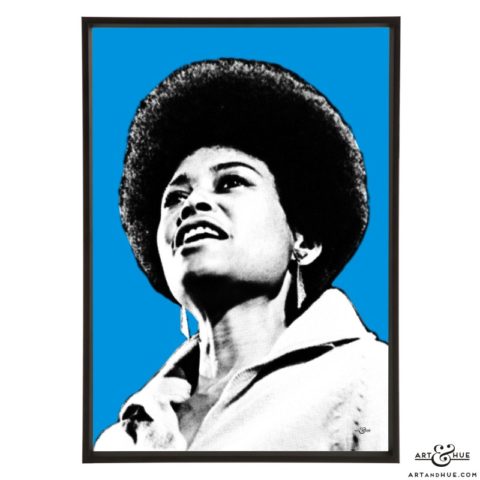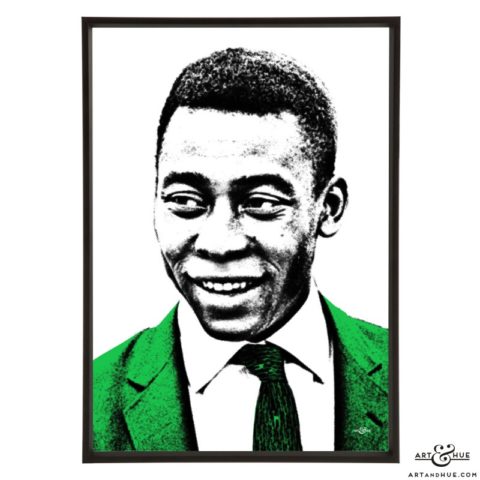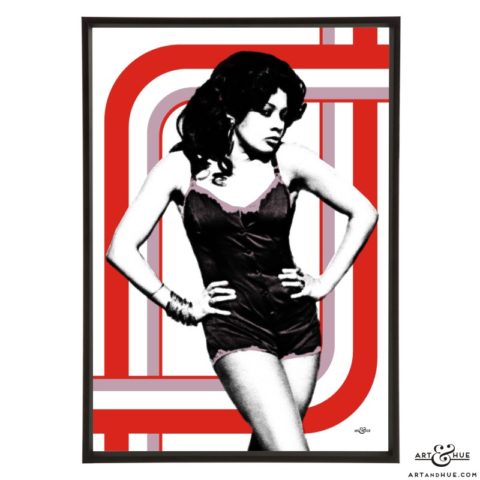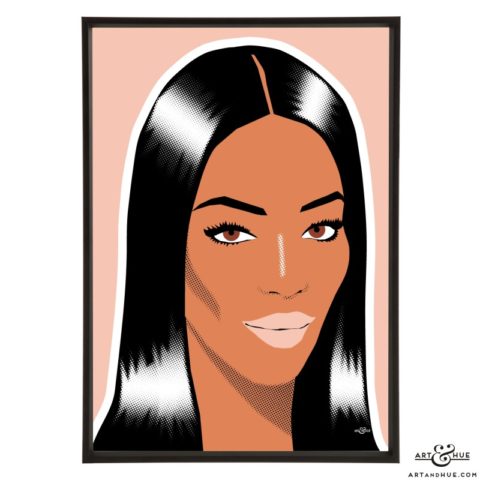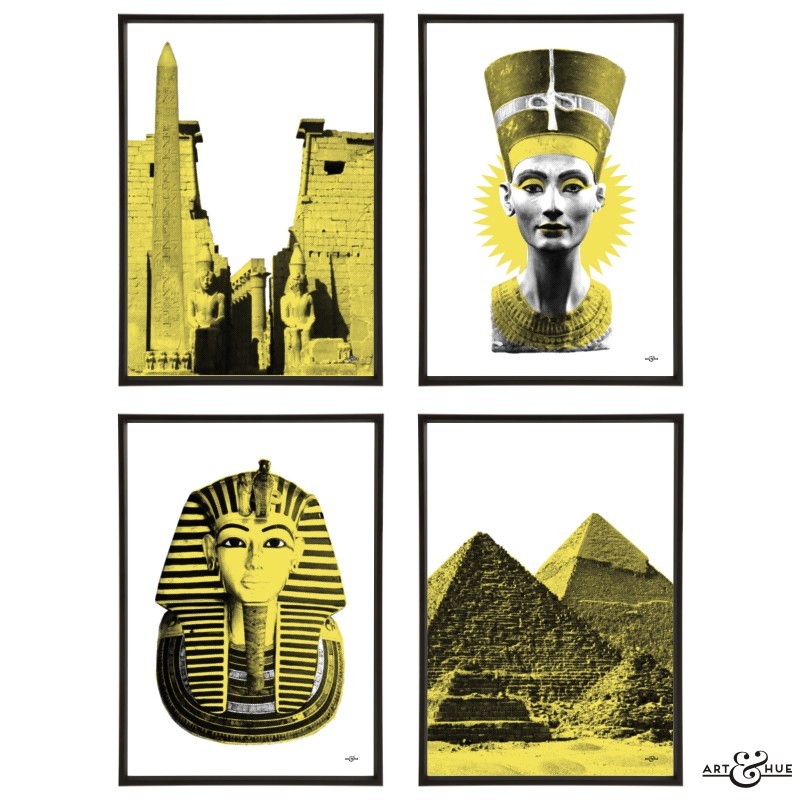Black History Month

Black History Month
The 1st of October marks the start of Black History Month in Britain (in the USA it takes place in February).
Creating pop art inspired by the popular culture of previous decades highlights the historic lack of diversity but there were pioneering performers who combated bias, made their mark, and created history in the process. Here are some of the Black icons at Art & Hue from film, fashion, sport, history, & music:
Donyale Luna
Donyale was also the first Black woman to have a shop-window mannequin created in her image – just after the mannequin of Twiggy in 1966, Adel Rootstein released the Donyale version. As well as her career in fashion, the African American model appeared in films by Dali, Andy Warhol, and Federico Fellini.
Earl Cameron
Cameron went on to have a long and varied career and was still active in film & television, recently appearing in “Inception” and “The Queen”, up until his death in August 2020. With appearances in the Bond film “Thunderball” and cult projects including “The Prisoner” and “Danger Man”, Earl Cameron was the oldest living actor to have appeared in “Doctor Who”.
Art & Hue has reimagined the poster to make Earl Cameron the star of the film, which he truly is.
Dame Shirl
Dame Shirl has the unique distinction of singing more than one Bond theme, in fact performing three – Moonraker, Diamonds Are Forever, and of course the bombastic Goldfinger.
All composed by John Barry, Goldfinger was written by Barry with lyrics by Joan Collins‘ husband at the time Anthony Newley. Packed full of powerful brass, the song ended on such a long note that it was reported that Shirley nearly fainted to sustain it during recording.
Renowned for her glamourous outfits and idiosyncratic hand movements, Dame Shirl had her own prime time entertainment show on BBC1 during the 1970s and she continues to appear in TV specials.
Miss Ross & The Supremes
Miss Ross, Mary Wilson, & Florence Ballard garnered fans worldwide with their successful combination of attractive voices, catchy tunes, stylish looks, and elegant choreography.
Hits came thick and fast including “Baby Love”, “Where Did Our Love Go”, “Stop! In the Name of Love”, “I Hear a Symphony”, “You Can’t Hurry Love”, “You Keep Me Hangin’ On”, “Reflections”, “I Second That Emotion”, “I’m Gonna Make You Love Me”, and many, many more…
The Queen of Soul
Her music and performances saw her crowned the The Queen of Soul before the 1960s came to an end, a title she retained all her life.
In later years, she collaborated with contemporary musicians including Annie Lennox and George Michael and was invited to perform at the White House.
Vikki Richards
One of the few Black actresses to appear in a British saucy comedy in the 1970s, Vikki Richards also appeared in “Black Snake” with Anouska Hempel & David Prowse, “Curse of the Crimson Altar” with Christopher Lee, “Zeta One” with Valerie Leon, James Robertson Justice, Charles Hawtrey, & Carol Hawkins, “Ghost in the Noonday Sun” with Peter Sellers, “Voyage of the Damned” with Faye Dunaway, “Marty” with Marty Feldman, Michael Palin, & Terry Jones, the TV series “Up Pompeii!” with Frankie Howerd & Valerie Leon, “Return of The Saint”, “The Gentle Touch”, & “Howard’s Way”.
Edson
Born as Edson Arantes do Nascimento, a nickname was acquired, and stuck, during his schooldays.
The Brazilian footballer made the pinnacle of his sport, becoming the highest-paid player for a time and scoring a World-record beating amount of goals throughout his career.
Jazz Icons
Black musicians & performers pioneered during the golden age of jazz, creating new musical forms and gaining worldwide acclaim for their talent and work.
Billie Holiday, Satch, Thelonious, John Coltrane, Nat King Cole, Nina Simone, Dizzy, Sarah Vaughan, Charlie Parker, Miles, Cleo Laine, the Duke, Abbey Lincoln, and Count Basie all get the stylish Art & Hue pop art treatment in the jazz icons collection in tribute to enduring jazz singers & musicians.
Naomi Campbell
Naomi scored her first British Vogue cover in December 1987 and, whilst she is the second Black model to appear on the cover of the magazine, she is the first to not have had her face obscured.
The first Black model on any edition of Vogue was Donyale Luna in 1966, who appeared on the British March issue, but the image chosen had her face partly hidden behind her hand.
30 years on from that famous January 1990 cover of “the big five” supermodels, Naomi is still modelling – on catwalks, in editorial, and in campaigns – as well as contributing to British Vogue under the fresh stewardship of Edward Enninful.
Paul Robeson
A successful sportsman, singer, actor, and campaigner, Paul Robeson became an honorary Welshman through his close association with the mining community in Wales, visiting frequently to perform and starring in the Welsh film “The Proud Valley” made by Ealing Studios.
When Aneurin Bevan introduced his friend Robeson to the 1958 Eisteddfod, the actor told the audience that “of all the films I have made, the one I will preserve is ‘The Proud Valley'”.
Lola Falana
Persuaded by Sammy Davis Jr. to create a Las Vegas show, she quickly conquered the city.
Known as the Queen of Las Vegas, Lola Falana was the highest paid entertainer in the city by the late 1970s.
The Ronettes
One of the most powerful and evocative songs of the 1960s, “Be My Baby” was the first song released by The Ronettes and has become widely regarded to be one of the best songs ever produced. It was a prime example of the “Wall of Sound” – blending, echoing, and layering tracks to create a rich result.
Along with hits “Baby, I Love You”, “(The Best Part of) Breakin’ Up”, and “Walking in the Rain”, The Ronettes capture an exciting moment in music history with innovative production that still inspires to this day.
Cricketers
Baron Learie Constantine
When London’s Imperial Hotel refused to honour Constantine’s room reservation, he successfully took legal action for breach of contract in a widely-reported milestone leading to anti-discrimination legislation.
The Race Relations Act of 1965 established the Race Relations Board, on which Constantine sat as one of three members, to investigate cases of racial discrimination.
Awarded a life peerage in 1969, Baron Constantine was the first Black Parliamentarian sitting in the House of Lords.
George Headley
In 1939, Headley was the first cricketer to score two hundreds in a Lord’s Test, an accomplishment not repeated until 1990.
Regarded as one of the best ever batsman, George Headley’s 2,190 runs in 22 Tests at 60.83, and a First-Class cricket average of 69.86, stands third in the all-time list of averages of players.
The Jamaican Prime Minister described Headley as “Black excellence personified in a white world and a white sport”.
Old West Icons
It’s now estimated that a quarter of cowboys in the Old West were African American, not they were represented fairly in Western films of the classic Hollywood era.
After the Civil War, a career as a cowboy was one of the few jobs open to African American men who, whilst they experienced widespread discrimination, found respect and equality within their crews.
Originally, the word “cowboy” was a pejorative term used by White cowhands for Black crew members but it’s a testament to the impact made by African American ranch workers that the title of cowboy is the one that prevails.
Milly Scott
Milly Scott represented the Netherlands at the 1966 edition of the European Song Contest and made history in the process as the first Black entrant. Milly’s participation, with the song “Fernando en Filippo”, marked an important milestone in the song contest’s history.
In 1964, the Netherlands had previously entered Indonesian singer Anneke Gronloh as the first non-white participant, and Sweden’s singer in 1966 was accompanied by African American jazz musician Sahib Shihab, but Milly’s performance as the first Black headline singer for a country broke boundaries.
There have been more Black singers who have represented their countries over the years but it all started with the groundbreaking Milly Scott in 1966.
Joseph Bologne Chevalier de Saint-Georges
A contemporary of Mozart, which led to the moniker of “Black Mozart”, Saint-Georges composed many pieces of music for ensembles of all sizes as well as operas.
More than a successful and groundbreaking composer, Saint-Georges was an accomplished sportsman and dancer who mixed with royalty, invited to London by the Prince of Wales (George IV) to fence, and to Versailles to perform for and with Queen Marie Antoinette.
African American Actors & Actresses
Black icons feature on the Movie Map of America, including the first African American to win an Oscar (Hattie McDaniel) and the first African American man to win the Best Actor Oscar (Sidney Poitier). They’re joined by performers including the pioneering actor, producer & director Spencer Williams Jr., musicians and actors Satchmo, Nat King Cole, Ray Charles & Gladys Knight, and more… Movie Map of America
Mr. Creamy & Lolly Pop
Stylish Black subjects feature in Art & Hue’s Mr. Creamy & Lolly Pop collections, available in three sizes and many colour options, ideal for adding a lick of colour, fun and style to any wall.

Black Women of Bond
The first Black actress Sylvana Henriques appeared in “On Her Majesty’s Secret Service”, the trailblazer of a select group of groundbreaking women who featured in one of the largest and most successful British film franchises. Whilst it was a non-speaking role, Sylvana‘s inclusion was an important step in representation given the impact the Bond films had, and still have, with audiences globally.
Further roles with more responsibiliy were to follow for pioneering Black actresses in the Bond films, with Trina Parks as the first Black actress with a speaking role in “Diamonds are Forever”; Gloria Hendry as the first Black actress to portray one of Bond’s love-interests; and Grace Jones taking control in “A View to a Kill”, a stand-out character in the film and in Bond history.
Naomie Harris is the first British Black actress to appear with Bond, and sets the record for the most Bond-film credits by a Black actress appearing as Eve Moneypenny in the final three Daniel Craig films.
The final Daniel Craig film “No Time to Die” saw Lashana Lynch take on the role of a British secret agent who is assigned Bond’s legendary code number, very much an equal to Bond.
Lynch’s assured performance embodies the progress Black actresses have made through the years, not just in the film franchise but also societal – it’s quite feasible that Nomi could headline her own spy film set in 00-branch.
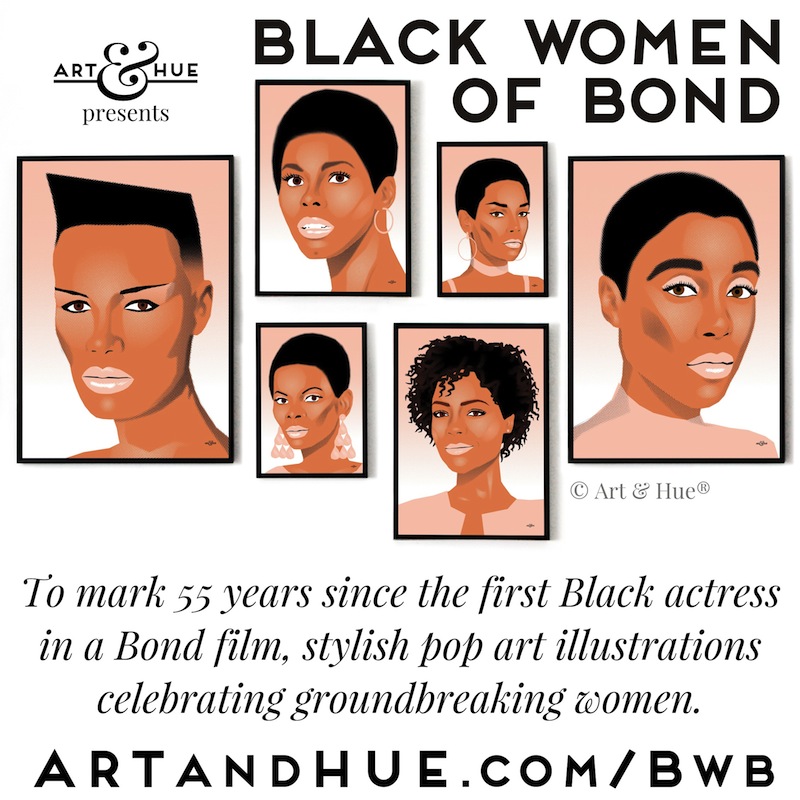
As Naomie herself said in 2015 at an event to celebrate Black Women of Bond, “there were not many representations of Black female beauty, I really have to thank Bond and the franchise for being forward thinking, and for being one of very few franchises at that time that actually presented Black women.”
There have been other Black women in the Bond films, including fashion model Nicaise Jean-Louis as one of Drax’s ark-passengers in “Moonraker”, Berry in “Die Another Day”, and Miss Jamaica 1961 in the very first Bond film “Dr. No”. Not an actress (“Dr. No” is her only film credit), Marguerite LeWars caught the eye of the production team at the airport in Jamaica which led to the pageant winner’s casting.
There are plans for new collections featuring Black icons so sign up to the mailing list to receive news when they’re launched in the future.
 Art & Hue
Art & Hue

